Today, all the selected projects were presented by their creator, we now have to choose one or more projects to collaborate with. Here is a short summery of all the projects:
Esther Polak: Sand Spiral Machine
http://spiraldrawingsunrise.wordpress.com/
The idea is to build a robot that uses solar power in order to move that is nonstop drawing a line of sand. When it has collected enough power it will move: When the sun rises, the distances the robot can make will rise because the amount of light that hits the solar panel increases. The line of sand will visualize this process.
Collaborators should know:
– electro-mechanical: motors, condensers, etc.
- solar power
- programming skills for arduino
- sand flow research
- conceptual and visual impact reflection
- local research: find nice spots to test
- photography and video documentation
- writing and text correction for the blog
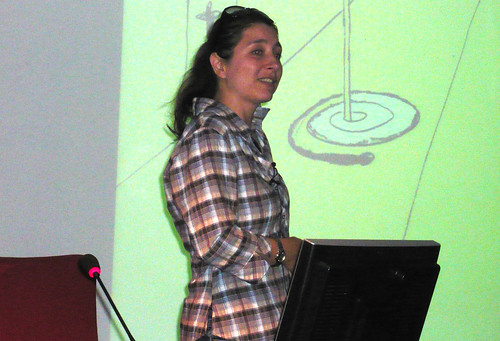
Paola Guimerans, Horacio González, Igor González: Biophionitos
In the nineteens century a lot of techniques came up in order to generate moving images like zoetrope (-> wikipedia)
A processing application will include polygons. this polygons are used to create images of pets, which can then be printed out to create your own animation generator at home – the idea is to make it easy to build, in order to animate people to build it at home.
– processing
- electronics
- mechanical knowledge

Jordi Puig: MASK
(My Alter Self Consciousness)
The idea is to have a magic mirror that paints masks and animations in your face, so you’re not looking at a screen but at image of yourself. in order to do this we will use a spy mirror and project behind that to mix the mirrored image and the projection. we will use camera tracking to determine the position of the face/ projection. So the most work will be in face recognition and tracking on one side, on the other side to design and implement the animation.

Nova Jiang: Stage Fright
Nova will build an interfaced swing that will trigger video movement in order to use the swing to navigate through a narrative story or to amplify the experience of a swing.
Week 1:
build the swing
interface the swing
Week 2:
creating footage
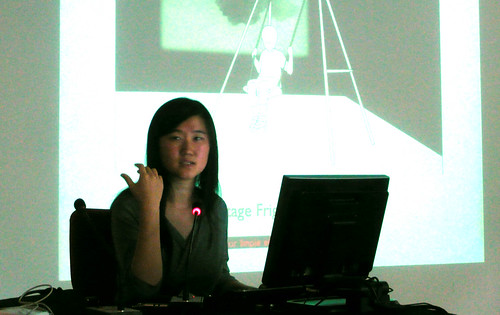
Philippe Chatelain: 360º score
laptoporchestra.net
Phillipes wants to create a device that can scan drawings and then generate sound out of them.
According to the nature of the graphics and the location of the user within the exhibition space the nature of the sounds may vary.
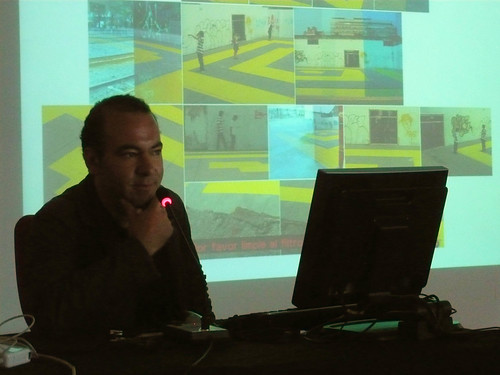
Walter Langelaar: Daedalus_ex_Machina [DexM]
The main point of Walter’s idea is to bring life video into a virtual representation of a space.
This he will realie in the quake engine which he found a code to implement life video for.
In order to realize this within the quake engine he wants to use and improve (resolution) an open source code he discovered recently and than rebuild the space of the medialab-prado and use the live video signal as a shader.
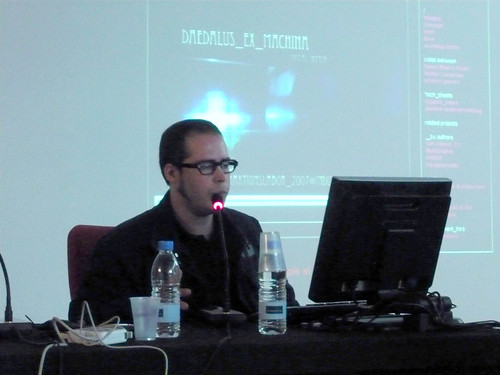
Karolina Sobecka: Immodesty
gravitytrap.com
Karolina will use cheap “one-way” cameras and hack them that each camera is wired to an arduino to press the shutter release automatet and simutaniously and that it’s actually possible to download pictures from these cameras. The goal is to creat a cheap virtual camera and then build an installation with this.
.collaborators:
– camera hacking
- fabrication: design and production of the camera rig.
- building electronic circuits with micro controllers
- ideas for how to use tis kind of system
- video post production
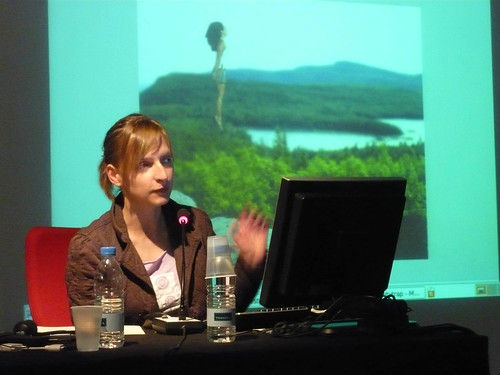
Eloi Maduell: augment(0)scope
the basic idea is to create an interface to show augmented reality.
[i'm sorry - he was so fast that i couldn't follow the whole thing s i just copy/paste]
“The idea is to make something similar to the old “optical boxes” developed on the 18th century. “Optical boxes” were wooden boxes where you could see, through a lens, engraves and daguerreotypes that allowed you to “travel” to remote places. This project plans to create an “optical box” using artificial vision technology and augmented reality techniques, thus overlapping “video” realities and “digital” fictions. The box will be hanging on the ceiling over user’s head, so she can freely rotate it on the space.”

Anaísa Franco: Expanded Eye
Anisa brought a huge acrylic sphere that she wants to use to project the eyes of the observer on
at each blink of the eye one more eye will be projected.
first five days: create the installation
next ten days: develope the information
collaborators: openFW, vvvv
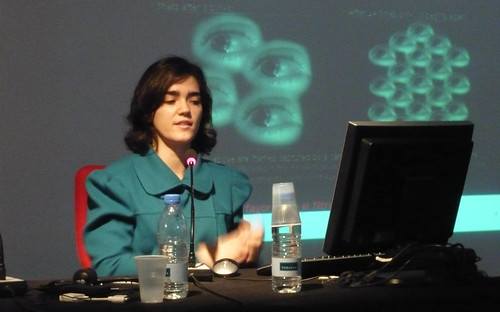
:[i'm sorry for your laptop, btw]:
Martín Nadal: Bloop
As far as i understood he will use an online interface to distribute frames of one second of video to different people around the world and ask them to redraw the frames and then send them back.
collaborates: who can think about an interesting interface? web programming interface would be handy…
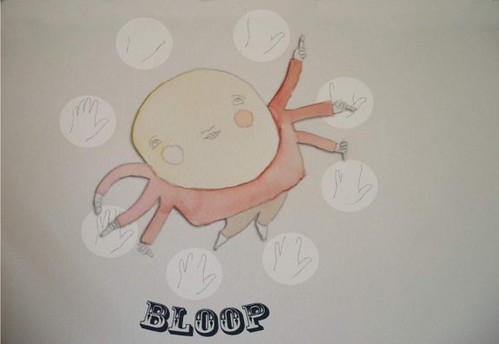
all project descriptions can be found here.
[sorry, i forgot to make a photo of the last presentation..]













 While taking part at Interactivos workshop in Madrid, i realized that the
While taking part at Interactivos workshop in Madrid, i realized that the 
Socialize